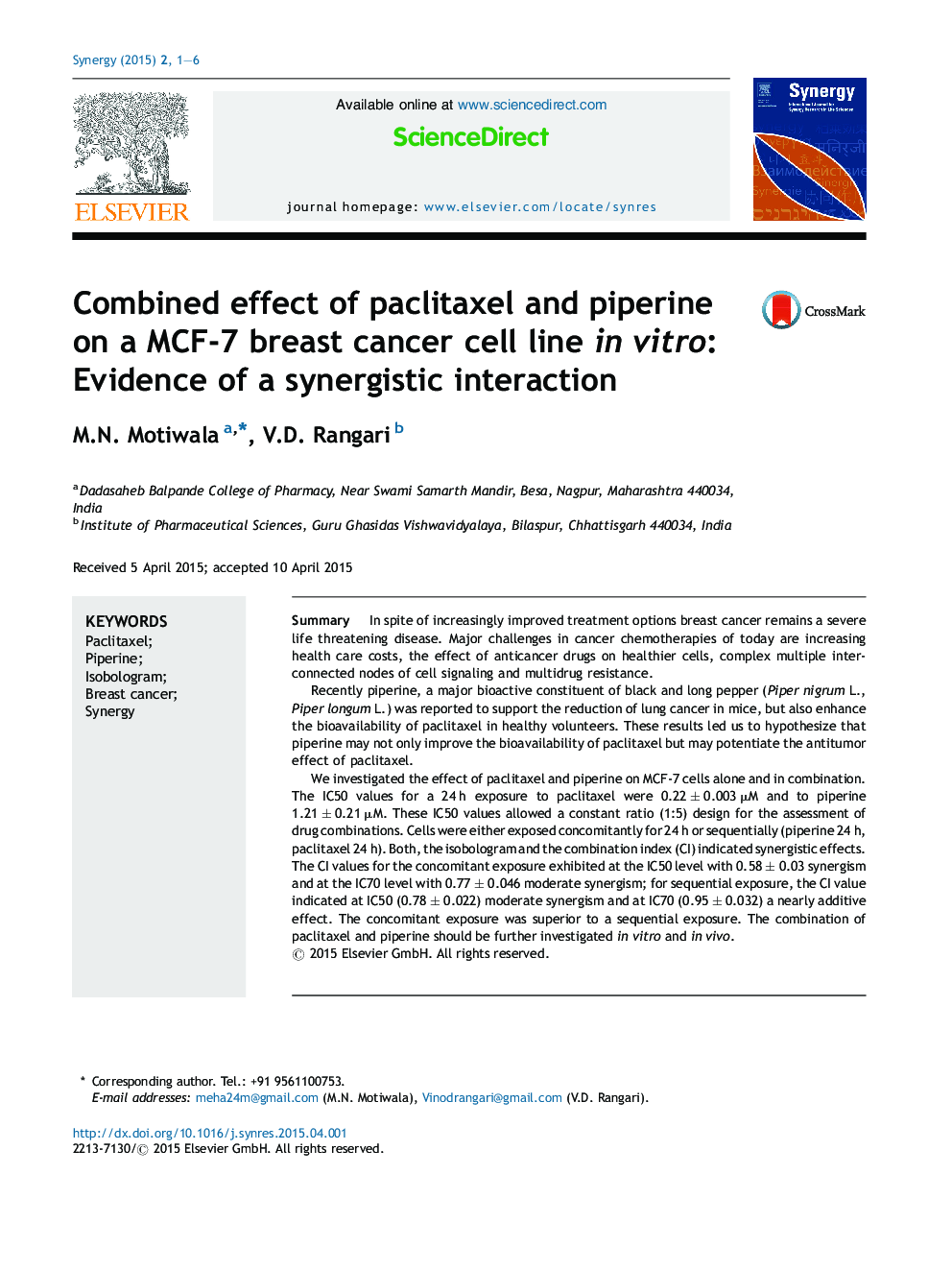| Article ID | Journal | Published Year | Pages | File Type |
|---|---|---|---|---|
| 2498222 | Synergy | 2015 | 6 Pages |
SummaryIn spite of increasingly improved treatment options breast cancer remains a severe life threatening disease. Major challenges in cancer chemotherapies of today are increasing health care costs, the effect of anticancer drugs on healthier cells, complex multiple interconnected nodes of cell signaling and multidrug resistance.Recently piperine, a major bioactive constituent of black and long pepper (Piper nigrum L., Piper longum L.) was reported to support the reduction of lung cancer in mice, but also enhance the bioavailability of paclitaxel in healthy volunteers. These results led us to hypothesize that piperine may not only improve the bioavailability of paclitaxel but may potentiate the antitumor effect of paclitaxel.We investigated the effect of paclitaxel and piperine on MCF-7 cells alone and in combination. The IC50 values for a 24 h exposure to paclitaxel were 0.22 ± 0.003 μM and to piperine 1.21 ± 0.21 μM. These IC50 values allowed a constant ratio (1:5) design for the assessment of drug combinations. Cells were either exposed concomitantly for 24 h or sequentially (piperine 24 h, paclitaxel 24 h). Both, the isobologram and the combination index (CI) indicated synergistic effects. The CI values for the concomitant exposure exhibited at the IC50 level with 0.58 ± 0.03 synergism and at the IC70 level with 0.77 ± 0.046 moderate synergism; for sequential exposure, the CI value indicated at IC50 (0.78 ± 0.022) moderate synergism and at IC70 (0.95 ± 0.032) a nearly additive effect. The concomitant exposure was superior to a sequential exposure. The combination of paclitaxel and piperine should be further investigated in vitro and in vivo.
